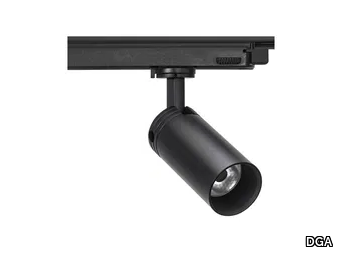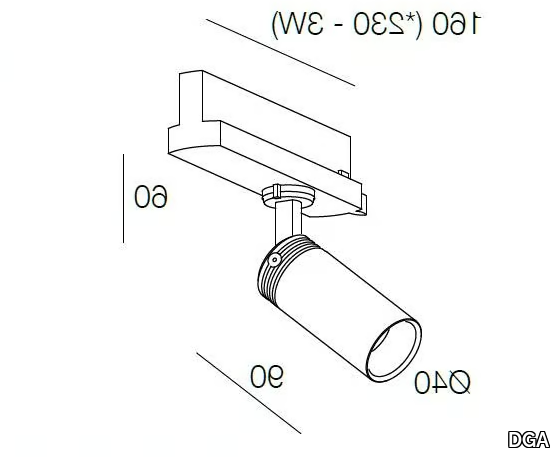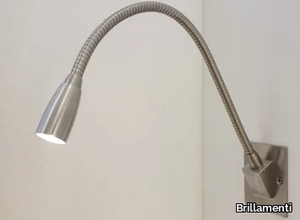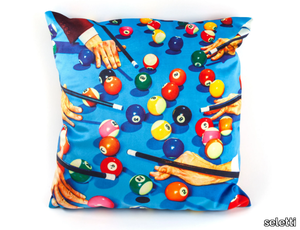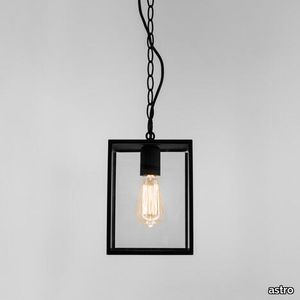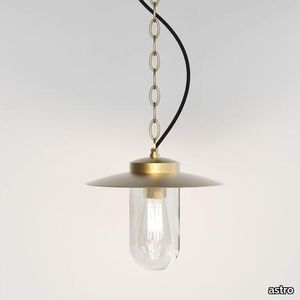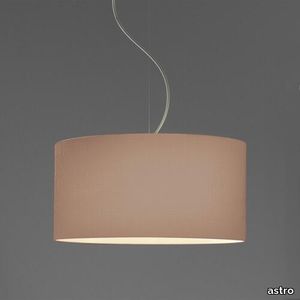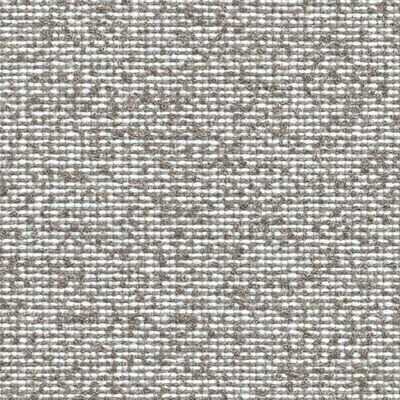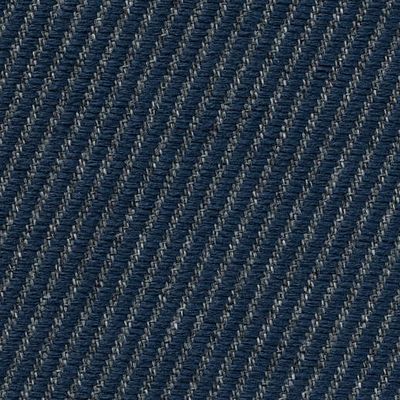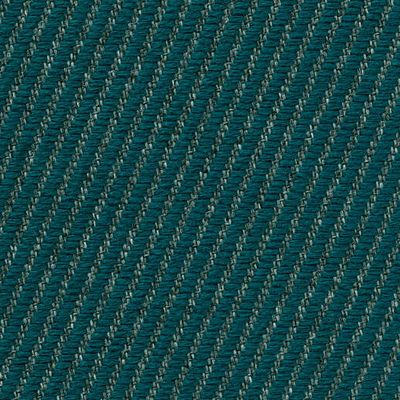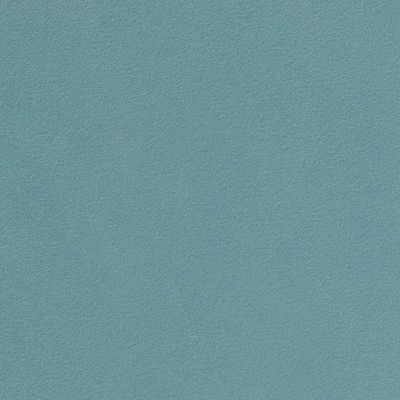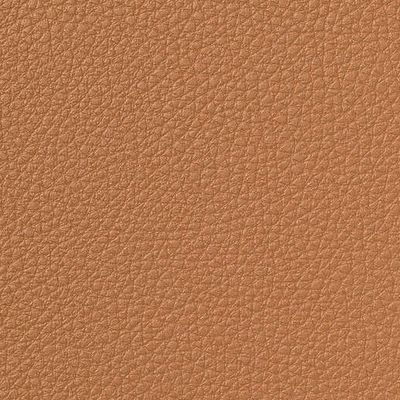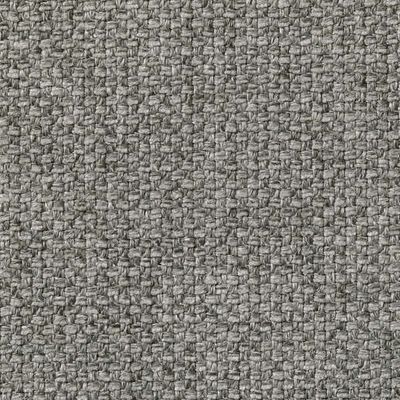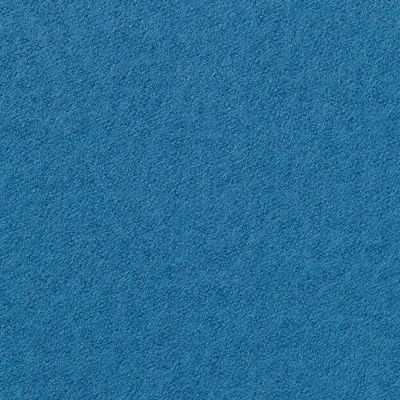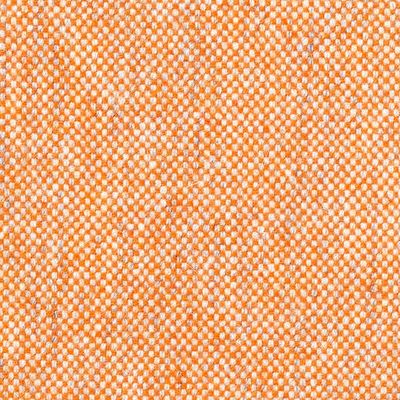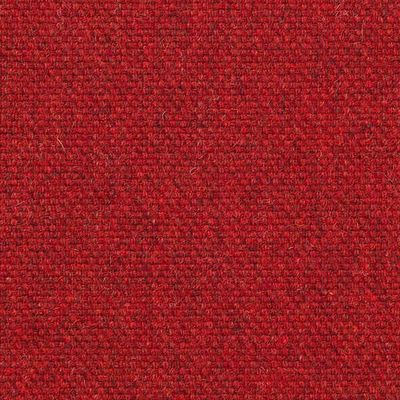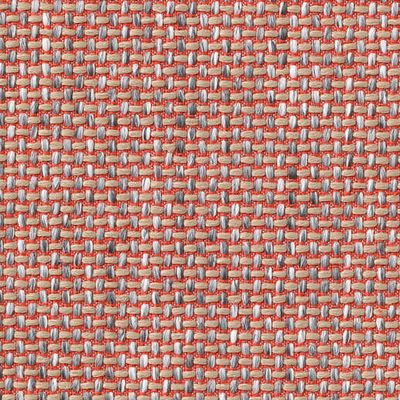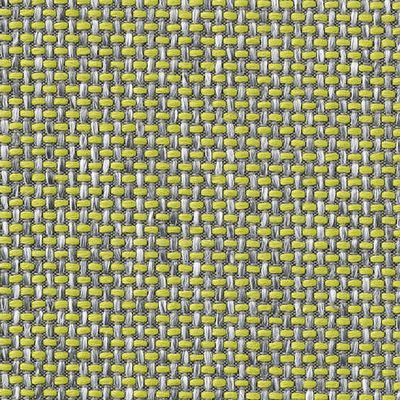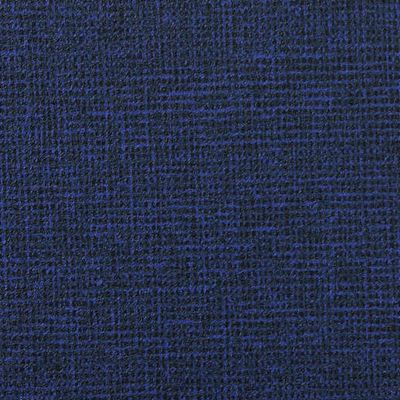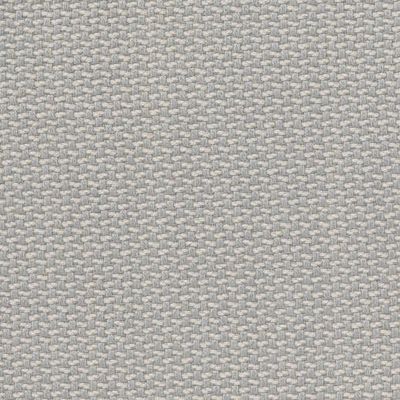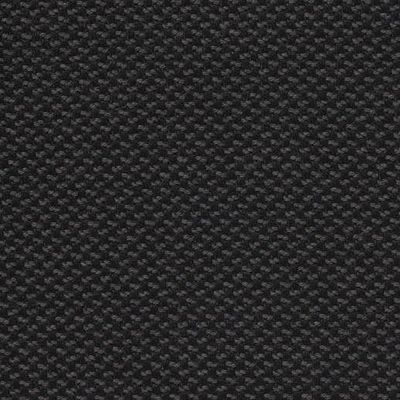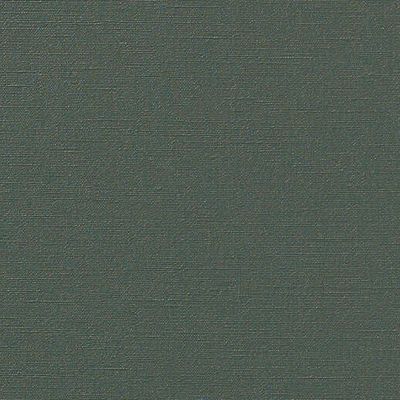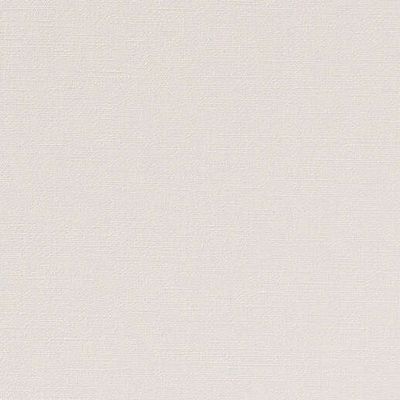TONO B 220V - Track-Light _ DGA - 2d files - 3d files
PRODUCT DESCRIPTION
Here’s the rephrased and expanded product description, along with a concise supplier overview and mention of the 3D file availability: **Product Description:** The **Tono B 220V** mini projector redefines lighting with a fresh perspective, now available in a track-mounted version for enhanced flexibility. Part of the **Tono and Tini** series, these compact fixtures boast exceptional adjustability and sleek dimensions, making them ideal for retail and hospitality environments. The track installation expands their versatility, while three stylish finishes ensure seamless integration into any design scheme. A downloadable 3D file of the product is available for precise planning and visualization. For more details, refer to the manufacturer’s specifications on **TONO B 220V DGA**. **Supplier Overview:** DGA is a renowned Italian interior design supplier celebrated for its innovative, high-quality lighting and furnishings. Let me know if you'd like any further refinements!
SUPPLIER: DGA
COLLECTION: TONO
TYPE: LIGHTING

OTHER SUPPLIERS
A wide range of product from near to 3,000 suppliers around the world.



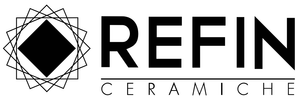
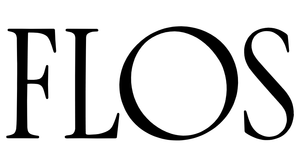

Other Products From This Supplier
A wide range of product from furniture to finishes to meet the desire of all designers.
GEMMA 20 IP68 - Underwater lamp _ DGA
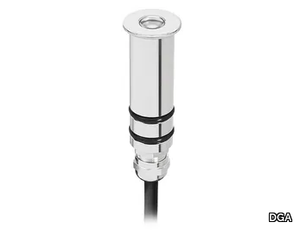
DGA > Outdoor lighting
Here’s a refined and expanded product description with a concise supplier overview, including the 3D file availability: **"The Gemma 20 IP68 is a sleek and durable underwater lamp designed for both functional and aesthetic lighting in aquatic environments, featuring robust IP68-rated waterproof construction for long-lasting performance. For detailed specifications, refer to the manufacturer's documentation on the GEMMA 20 IP68 by DGA. A downloadable 3D file of the product is also available for design integration. DGA, a renowned Italian interior design supplier (www.dga.it), is celebrated for its high-quality, innovative lighting and furniture solutions tailored for residential and commercial spaces."** This keeps the supplier description brief while highlighting key details about the product and its 3D file availability. Let me know if you'd like any further adjustments!
GEMMA 35 IP68 - Underwater lamp _ DGA
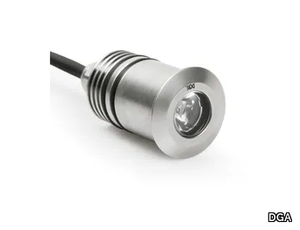
DGA > Outdoor lighting
Here’s a refined and expanded product description, including a concise supplier overview and mention of the 3D file availability: **"The Gemma 35 IP68 is a sleek and versatile underwater lamp, designed for both functionality and aesthetics. It features a wide range of optics for customizable lighting effects, two types of recessed boxes for flexible installation, and a compact size ideal for seamless integration into pools, fountains, or architectural water features. A 3D file of the product is available for download, enabling precise planning and visualization. Manufactured by DGA—a renowned Italian interior design supplier known for innovative, high-quality lighting and furniture solutions—the Gemma 35 IP68 reflects their expertise in blending cutting-edge design with durability."** (Note: Kept the supplier description to one sentence while highlighting key strengths, as requested.)
IRIDE 3 i IP68 - LED metal underwater lamp _ DGA
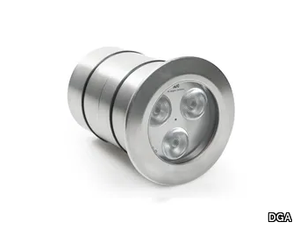
DGA > Outdoor lighting
Here’s the rephrased and expanded product description, including a concise supplier overview and mention of the 3D file availability: **Product Description:** The *Iride 3 i IP68* is a sleek, high-performance LED underwater lamp crafted from durable metal, designed for both architectural and decorative lighting in outdoor settings. Available in versatile color options—RGGB, DYNAMIC WHITE, or ALL WHITE—it features integrated on-board electronics for seamless color control and a DIP Switch for individual floodlight customization. The luminaire operates on 24V DC and requires pairing with the recessed box (ref. A00204) for installation. With an IP68 rating, it ensures robust waterproofing for submerged or wet environments. A downloadable 3D file of the product is available for precise planning and integration. For detailed specifications, consult the manufacturer, *DGA*, a renowned Italian design supplier celebrated for its innovative lighting solutions and premium craftsmanship. *(Note: The supplier description has been condensed to one sentence while retaining key details about DGA’s expertise and origin.)*
IRIDE 3 P IP68 - LED underwater lamp _ DGA
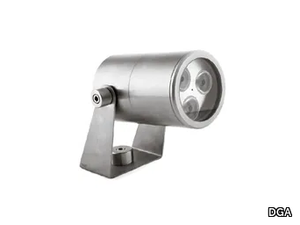
DGA > Outdoor lighting
Here’s your rephrased and expanded product description, including a concise supplier overview and mention of the 3D file availability: **Product Description:** The *Iride 3 P IP68* is a high-performance LED underwater lamp designed for precision aiming and versatile lighting effects, available in *Dynamic White*, *RGGB*, or *All White* versions. Featuring wide and medium beam options, this recessed luminaire is ideal for outdoor architectural and decorative lighting, with IP68-rated waterproof protection. Equipped with on-board electronics for color control and a DIP switch for individual floodlight customization, it operates on 24V DC and requires the *A00204* recessed box for installation. A downloadable 3D file of the product is available for detailed planning. For technical specifications, refer to the manufacturer’s documentation on *IRIDE 3 P IP68 DGA*. **Supplier Overview:** DGA is a renowned Italian design supplier known for its innovative lighting and interior solutions, catering to both residential and commercial projects. Explore their portfolio at [www.dga.it](http://www.dga.it).
ARCO 60 IP68 - Underwater lamp _ DGA
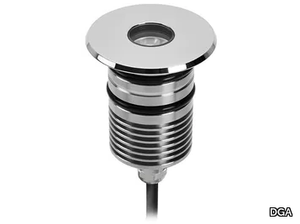
DGA > Outdoor lighting
Here’s a refined and expanded product description, including a concise supplier overview and mention of the 3D file availability: **"The Arco 60 IP68 is a premium underwater lamp featuring dynamic RGB lighting and multiple light distribution options, crafted from durable AISI 316L stainless steel for exceptional corrosion resistance. A 3D file of the product is available for download, facilitating seamless integration into design projects. For detailed specifications, refer to the manufacturer’s documentation on ARCO 60 IP68 DGA. Supplied by DGA, a renowned Italian design leader known for innovative lighting and interior solutions, the company combines craftsmanship with cutting-edge technology to serve global residential and commercial markets."** (Note: The supplier description is condensed to one sentence while retaining key details about expertise and reach.)
ARCO 80 IP68 - Underwater lamp _ DGA
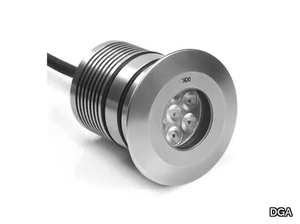
DGA > Outdoor lighting
Here’s a refined and expanded product description, including a concise supplier overview and mention of the 3D file availability: **Product Description:** The *Arco 80 IP68* is a high-performance underwater lamp designed to deliver an intense uplight effect, perfect for enhancing pools, fountains, or architectural water features. It offers multiple optics options for customizable lighting effects and is available in two power variants to suit different project needs. For detailed specifications, refer to the manufacturer’s documentation on the *ARCO 80 IP68 DGA*. A downloadable 3D file of the product is also available for seamless integration into design plans. **Supplier Overview:** DGA is a renowned Italian interior design supplier celebrated for its innovative, high-quality lighting and furnishings, catering to both residential and commercial projects. Explore their portfolio at [www.dga.it](http://www.dga.it).
MICRO IP68 - Underwater lamp _ DGA
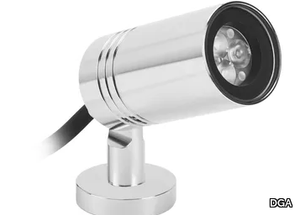
DGA > Outdoor lighting
Here’s a refined and expanded product description, along with a concise supplier overview and mention of the 3D file availability: **Product Description:** The *Micro IP68* is a compact yet powerful underwater lamp and versatile projector, blending advanced technology with sleek, miniaturized design. Despite its small size, it delivers exceptional performance and durability, making it ideal for humid, saline, or demanding environments. Engineered for flexibility, it suits a wide range of design applications, from architectural lighting to decorative installations, without compromising on strength or functionality. For detailed specifications, refer to the manufacturer’s documentation on *MICRO IP68 DGA*. A downloadable 3D file of the product is also available for precise integration into your projects. **Supplier Overview:** DGA is a renowned Italian interior design supplier celebrated for its innovative, high-quality lighting, furniture, and accessories, catering to both residential and commercial spaces. Let me know if you'd like any further adjustments!
NESIS H65 IP68 - Underwater lamp _ DGA
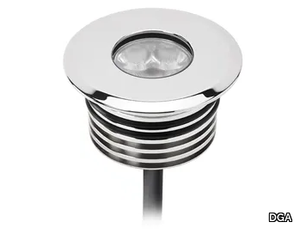
DGA > Outdoor lighting
Here’s a refined and expanded product description, including a concise supplier overview and mention of the 3D file availability: **"The Nesis H65 IP68 is a high-performance underwater lamp designed for durability and elegance, ideal for pools, fountains, and architectural water features. Its IP68 rating ensures complete waterproofing and reliable operation in submerged conditions. For detailed specifications, refer to the manufacturer’s documentation on the NESIS H65 IP68, available through DGA—a renowned Italian interior design supplier known for premium lighting and furniture solutions. A downloadable 3D file of the product is also available for precise project integration."** This keeps the supplier description brief while highlighting key details about the product and its digital accessibility.
METEORA FLEX - LED outdoor ceiling lamp _ DGA
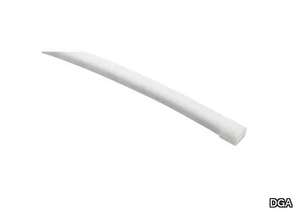
DGA > Ceiling lamp
Here’s a rephrased and expanded product description, including a concise supplier overview and mention of the 3D file availability: **"METEORA FLEX DGA outdoor linear lighting systems combine sleek design with durability, featuring an IP65 rating for reliable weather resistance. For detailed specifications, consult the manufacturer DGA—a leading interior and exterior design supplier renowned for innovative, high-quality solutions. A downloadable 3D file of the product is available for precise planning and integration into your projects."** (Note: I condensed the supplier details to one impactful sentence while preserving key credibility points and added the 3D file mention for practicality.)
QUARK EVO - Outdoor wall lamp _ DGA
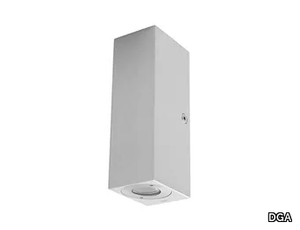
DGA > Wall lamp
Here’s a refined and expanded product description, including a concise supplier overview and mention of the 3D file availability: **Quark Evo** is a sleek outdoor wall lamp designed to blend seamlessly into modern architectural spaces. Its geometric parallelepiped shape elegantly conceals the light source while directing illumination both upward and downward, creating a soft, intimate grazing effect that subtly enhances the wall’s texture. Ideal for residential and commercial settings, this fixture combines minimalist aesthetics with functional lighting. A downloadable 3D file of the product is available for detailed visualization and project integration. **Supplier Overview:** DGA is a renowned Italian design supplier celebrated for its innovative lighting and furniture solutions, catering to both contemporary and classic interiors. Explore their portfolio at [www.dga.it](http://www.dga.it).
ORION EVO - Outdoor wall lamp _ DGA
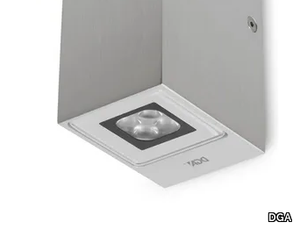
DGA > Wall lamp
Here’s the rephrased and expanded product description with a concise supplier overview and mention of the 3D file: *"This versatile outdoor spotlight features both double and single light emission options, ideal for creating striking decorative effects on buildings or accentuating architectural details. Designed for durability, it boasts an IP67 rating for weather resistance. The 3D file of the product is available for download, facilitating seamless integration into your design plans. Manufactured by DGA—a renowned Italian design leader known for innovative lighting and interior solutions—this product reflects their commitment to quality and functionality. For more details, visit ORION EVO DGA or explore their offerings at www.dga.it."*
IRIDE 3 i - Outdoor floodlight _ DGA
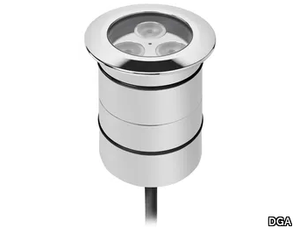
DGA > Functional light
Here’s a refined and expanded product description, including a concise supplier overview and mention of the 3D file availability: **Product Description:** The *Iride 3 i* is a versatile outdoor floodlight designed for architectural, scenographic, and decorative illumination. Available in RGB, Dynamic White, and All White versions, it enhances architectural features with dynamic lighting effects. A downloadable 3D file of the product is available for precise planning and integration into projects. For detailed specifications, consult the manufacturer’s documentation on *IRIDE 3 i DGA*. **Supplier Overview:** DGA is a leading Italian design supplier renowned for its high-quality lighting, furniture, and accessories, serving both residential and commercial markets. (Note: The supplier description has been condensed to one sentence as requested, while the product description is expanded with 3D file mention and slight rephrasing for clarity.)
IRIDE 3P - Adjustable Outdoor floodlight _ DGA
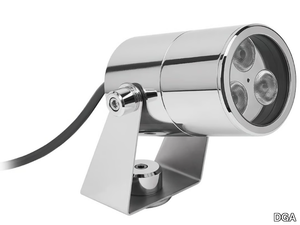
DGA > Functional light
Here’s your rephrased and expanded product description, including a concise supplier overview and mention of the 3D file: *"This adjustable floodlight is designed for outdoor use, offering versatile lighting solutions in RGGB, Dynamic White, or All White variants. Equipped with on-board electronics for color control and a DIP Switch for individual fixture management, it’s ideal for architectural and decorative lighting applications. The fixture operates on 24V DC and boasts an IP67 rating for durability. A downloadable 3D file is available for precise project planning. For detailed specifications, refer to the manufacturer’s documentation under IRIDE 3P DGA. The product is supplied by DGA, a renowned Italian design company known for its high-quality lighting and interior solutions."* (Kept the supplier description brief while highlighting key credibility points.)
LOLED P - Outdoor wall lamp _ DGA
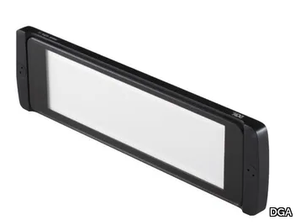
DGA > Wall lamp
Here’s your rephrased and expanded product description, including a concise supplier overview and mention of the 3D file: *"The LOLED P lighting fixture redefines illumination with its ultra-slim profile, offering effortless surface-mounted installation on walls or ceilings—no masonry required. Its soft, diffuse glow provides homogenous, glare-free lighting, making it ideal for step lighting or creating subtle ambient effects. A downloadable 3D file of the product is available for precise planning. Manufactured by DGA, a renowned Italian design leader known for innovative lighting and interior solutions, the LOLED P combines functionality with sleek modern design."* (Kept the supplier description to one impactful sentence while maintaining key details.)
PEGASO - Adjustable Outdoor floodlight _ DGA
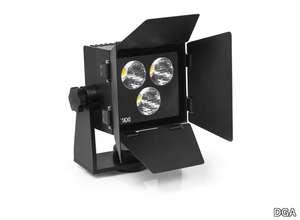
DGA > Functional light
**Pegaso Adjustable Spotlights** combine cutting-edge technology with uncompromising performance, making them ideal for architectural lighting. Featuring **DGA Cooler Max technology**, these spotlights include an advanced heat dissipation system that enhances longevity and reliability. The fixture offers **355° vertical adjustability** and flexible horizontal positioning, with a **mechanical locking system** for precise light control. Crafted from **solid billet aluminum** with CNC machining, the structure undergoes grinding and galvanizing for superior hardness and weather resistance. Pegaso is **fully waterproof and IP67-rated**, ensuring durability in any environment. A **3D file of the product is available for download**, facilitating seamless integration into design projects. **Supplier Overview:** DGA is a renowned Italian design leader known for innovative, high-quality lighting and interior solutions. Explore their offerings at [www.dga.it](http://www.dga.it). For more details, contact the manufacturer about **Pegaso DGA**.
EDEN - Bollard light _ DGA
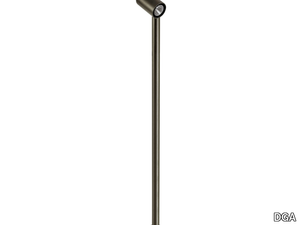
DGA > Outdoor lighting
Here’s a refined and expanded product description, including a concise supplier overview and mention of the 3D file availability: **"Eden is an elegant bollard light designed to enhance outdoor spaces with its ergonomic structure, creating a romantic and timeless ambiance. Ideal for gardens, pathways, or terraces, it combines functionality with aesthetic appeal. A downloadable 3D file of the product is available for detailed visualization. Manufactured by DGA, a renowned Italian design brand known for its innovative lighting and interior solutions, Eden reflects the company’s commitment to quality and style."** (Note: I condensed the supplier details to one impactful sentence while retaining key credibility points. Let me know if you'd like further adjustments!)
MICRO - Adjustable Outdoor floodlight _ DGA
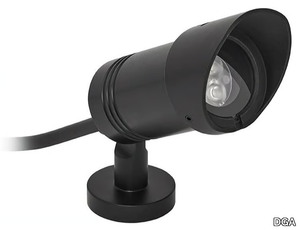
DGA > Functional light
**Product Description:** *Micro* is a sleek and adjustable outdoor floodlight designed to blend seamlessly into any environment. Compact and discreet, this mini-projector delivers high-performance lighting while maintaining a minimalist aesthetic that complements outdoor spaces. It features three versatile fastening systems for flexible installation, ensuring total integration with its surroundings. For further details, refer to the manufacturer’s specifications on *MICRO DGA*. A downloadable 3D file of the product is also available for precise planning and visualization. **Supplier Description:** DGA is a renowned Italian design supplier known for its innovative, high-quality lighting and interior solutions.
ODINO 6 P - Adjustable Outdoor floodlight _ DGA
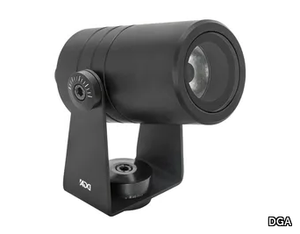
DGA > Functional light
Here’s the rephrased and expanded product description with a concise supplier overview and mention of the 3D file: *"The Odino 6 P and Odino 6 i LED fixtures feature innovative driverless technology, allowing direct connection to 220-240V AC mains without the need for an external driver, simplifying installation and wiring. The Odino 6 P is a compact outdoor projector, while the Odino 6 i is a recessed, drive-over version, making the Odino range a versatile solution for architectural and landscape lighting. A downloadable 3D file of the product is available for detailed planning. For more technical details, refer to the manufacturer's specifications on ODINO 6 P DGA. DGA, a leading Italian design supplier renowned for high-quality lighting and interior solutions, combines innovation with craftsmanship to serve global clients."* (Kept the supplier description to one sentence while highlighting key strengths.)
IRIDE 9 - Adjustable Outdoor floodlight _ DGA
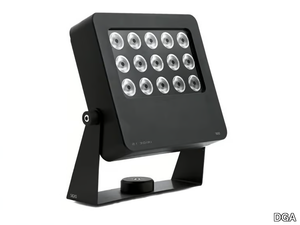
DGA > Functional light
Here’s a refined and expanded product description, including a concise supplier overview and mention of the 3D file availability: **Product Description:** The *Iride 9* is a versatile, high-performance outdoor floodlight designed for architectural, scenographic, and decorative illumination. Available in RGB, Dynamic White, and All White variants, it enhances structures with dynamic lighting effects and exceptional luminous intensity. Ideal for creating striking visual impact, this luminaire combines cutting-edge technology with sleek design. A downloadable 3D file of the product is available for detailed project integration. For technical specifications, refer to the manufacturer’s details on *IRIDE 9 DGA*. **Supplier Overview:** DGA is a renowned Italian design supplier celebrated for its innovative lighting and interior solutions, catering to both residential and commercial projects. Let me know if you'd like any further adjustments!
QUANTUM P - Adjustable Outdoor floodlight _ DGA
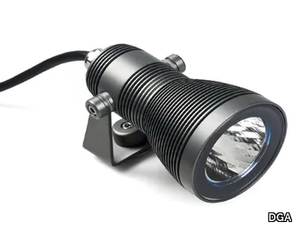
DGA > Functional light
Here’s a refined and expanded product description, including a concise supplier overview and mention of the 3D file availability: **"The Quantum P is a versatile and compact outdoor floodlight, designed to deliver high luminous flux for powerful illumination. Equipped with multiple filters, it offers exceptional flexibility, making it ideal for a wide range of lighting projects. For further details, refer to the manufacturer's specifications on QUANTUM P by DGA—a renowned Italian design supplier known for innovative, high-quality lighting solutions. A downloadable 3D file of the product is also available for precise project planning."** (Note: I condensed the supplier description to one impactful sentence while retaining key details about DGA’s expertise and origin.)
RIDI - Outdoor steplight _ DGA
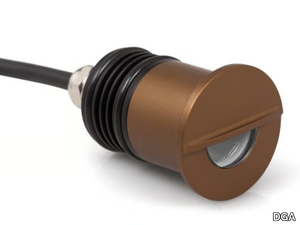
DGA > Functional light
**Ridi** is a sleek outdoor steplight designed to blend seamlessly into its surroundings while providing functional illumination. This compact, recessed luminaire features a specialized flange to minimize glare, ensuring subtle yet effective lighting that enhances the environment with minimal visual intrusion. For more details, refer to the manufacturer’s specifications on **RIDI DGA**. A 3D file of the product is also available for download, allowing for easy integration into design plans. **Supplier Description:** DGA is a renowned Italian interior design supplier known for its high-quality, innovative lighting and furniture solutions. Explore their offerings at [www.dga.it](http://www.dga.it).
DISCOVERY - Outdoor steplight _ DGA
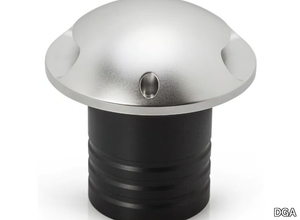
DGA > Functional light
**Discovery** is a sleek and versatile outdoor steplight designed to be recessed into the floor, offering customizable illumination with mono-emission, bi-emission, or triple-emission options to suit different lighting needs. Ideal for enhancing safety and aesthetics, it elegantly marks pathways and walkways with a subtle yet effective glow. A downloadable 3D file of the product is available for detailed visualization and planning. For more technical specifications, refer to the manufacturer’s details under **DISCOVERY DGA**. **Supplier Overview:** DGA is a renowned Italian design supplier known for its innovative, high-quality interior and exterior solutions, catering to both residential and commercial projects. Explore their offerings at [www.dga.it](http://www.dga.it).
MACRO - Adjustable Outdoor floodlight _ DGA
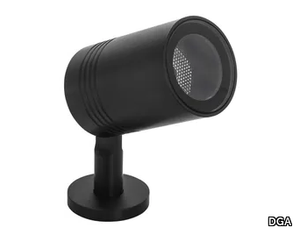
DGA > Functional light
Here’s the rephrased and expanded product description, including a concise supplier overview and mention of the 3D file: *"The MACRO is an ultra-compact and highly versatile adjustable spotlight designed for outdoor use, perfect for creating precise lighting effects and accentuating architectural details. It features a flexible fixing system for multi-directional positioning and is available with an optional honeycomb louver for enhanced light control. A downloadable 3D file of the product is available for detailed planning. Manufactured by DGA, a renowned Italian design leader known for innovative lighting and interior solutions, the MACRO DGA combines functionality with sleek design. For more details, visit www.dga.it."* (Note: I condensed the supplier details to one impactful sentence while retaining key credibility points—brand reputation, specialty, and origin.)
LUI IP65 - Outdoor steplight _ DGA
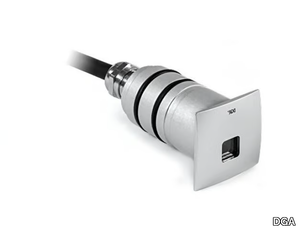
DGA > Functional light
Here’s the rephrased and expanded product description, including a concise supplier overview and mention of the 3D file availability: *"This recessed fixture with housing is designed for indoor use, perfect for creating elegant light effects on floors or illuminating pathways and walkway areas. With an IP67 rating, it ensures durability and resistance to dust and moisture. For additional details, refer to the manufacturer’s specifications under LUI IP65 DGA. A downloadable 3D file of the product is available for design integration. Supplied by DGA, a leading Italian interior design brand known for innovative, high-quality lighting solutions."* (Note: The supplier description has been condensed to one sentence while retaining key details about DGA’s expertise and reputation.)
LEI IP65 - Outdoor steplight _ DGA
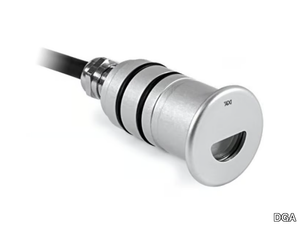
DGA > Functional light
Here’s a rephrased and expanded product description, along with a concise supplier overview and mention of the 3D file: **Product Description:** This recessed fixture with housing is designed for indoor use, perfect for creating elegant light effects on floors or illuminating pathways and walkway areas. With an IP67 rating, it ensures durability and resistance to dust and moisture. The 3D file of this product is available for download, allowing for seamless integration into your design plans. For additional details, refer to the manufacturer’s specifications under LEI IP65 DGA. **Supplier Overview:** DGA is a leading Italian interior design supplier renowned for its high-quality, innovative lighting and furniture solutions. (Note: Kept the supplier description to one sentence as requested, while maintaining key details.)
ARCO 50 iL - Outdoor steplight _ DGA
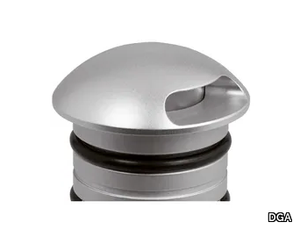
DGA > Functional light
Here’s a refined and expanded product description, including a concise supplier overview and mention of the 3D file availability: *"The ARCO 50 iL DGA is a sleek and durable outdoor steplight, designed with an IP67 rating for superior weather resistance, making it ideal for gardens, pathways, and exterior spaces. For detailed specifications, refer to the manufacturer's documentation. A downloadable 3D file of the product is available for design integration. DGA, a renowned Italian design supplier (www.dga.it), is known for its high-quality lighting and interior solutions, blending innovation with timeless craftsmanship."* This keeps the supplier description brief while highlighting key details about the product and its digital accessibility.
GIOVE - Outdoor steplight _ DGA
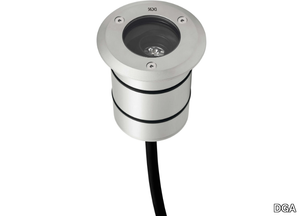
DGA > Functional light
**Giove** is a sleek and versatile outdoor steplight, available in two models: **Giove 7S R** and **Giove 3S R**. The **Giove 3S R** features an adjustable tilt of +/- 20°, a honeycomb design for refined light diffusion, and high-efficiency performance, making it ideal for both functional and aesthetic outdoor lighting. For more details, refer to the manufacturer’s specifications on **GIOVE DGA**. A downloadable 3D file of the product is also available for precise planning and integration into your design projects. **Supplier Description:** DGA is a renowned Italian interior design supplier known for its innovative, high-quality lighting and furnishings, catering to residential and commercial spaces worldwide. Explore their offerings at [www.dga.it](http://www.dga.it).
AURA 6-8 - Outdoor steplight _ DGA
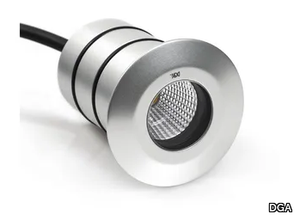
DGA > Functional light
Here’s the rephrased and expanded product description, including a concise supplier overview and mention of the 3D file: *"This recessed outdoor fixture is ideal for creating subtle light accents or enhancing architectural lighting on façades, featuring a durable Neoprene cable (L=100cm) and requiring installation with the recessed box ref. A00216. With an IP67 rating, it ensures reliable performance in various weather conditions. A 3D file of the product is available for download, facilitating seamless integration into your design plans. For additional details, refer to the manufacturer’s specifications for AURA 6-8 DGA. The product is supplied by DGA, a renowned Italian design brand known for its innovative lighting and interior solutions."*
AURA 12 - Outdoor steplight _ DGA
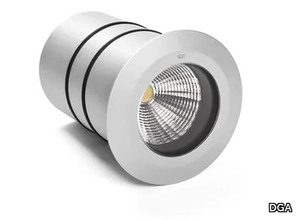
DGA > Functional light
Here’s your rephrased and expanded product description, including a concise supplier overview and mention of the 3D file: *"The AURA is a sleek recessed fixture designed for outdoor use, ideal for creating subtle light accents or enhancing architectural lighting on façades. With an IP67 rating for durability, it requires installation with a recessed box (ref. A00204.30 or A00276.40). A 3D file of the product is available for download, facilitating seamless integration into design plans. For detailed specifications, refer to the manufacturer’s documentation on AURA 12 DGA. DGA, a renowned Italian design supplier, is recognized for its high-quality lighting and interior solutions, blending innovation with craftsmanship."* This keeps the supplier description brief while maintaining key details and adds the 3D file mention for practicality. Let me know if you'd like any further refinements!
TONO I IP67 - Outdoor steplight _ DGA
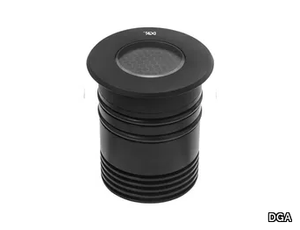
DGA > Functional light
Here’s a refined and expanded product description, including a concise supplier overview and mention of the 3D file availability: **Product Description:** The *Tono i IP67* is a high-performance outdoor steplight featuring backward optics and a precise 3° lens, delivering focused illumination for architectural and landscape applications. Part of the *Tini* and *Tono* mini track projector series, it combines exceptional orientability with compact dimensions, making it ideal for retail, hospitality, and outdoor projects. The track installation ensures versatility, while three finish options allow seamless integration into any design. A downloadable 3D file is available for detailed planning. For technical specifications, refer to the manufacturer’s documentation on *TONO I IP67 DGA*. **Supplier Overview:** DGA is a renowned Italian design supplier celebrated for its innovative lighting, furniture, and interior solutions, catering to both residential and commercial markets. (Note: Kept the supplier description to one sentence as requested, focusing on core strengths.)
TONO IR IP67 - Outdoor steplight _ DGA
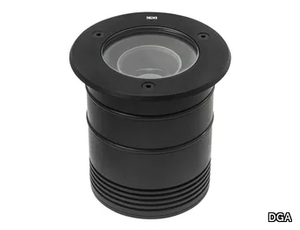
DGA > Functional light
Here’s the rephrased and expanded product description, including a concise supplier overview and mention of the 3D file availability: **Product Description:** The *Tono iR IP67* is a sleek and versatile outdoor steplight designed for both functionality and aesthetics. Its compact, minimalistic design, paired with a robust outer casing, ensures superior IP67 protection against harsh weather conditions. Featuring a rearward optic, it delivers effective anti-glare illumination while maintaining a discreet profile. For tailored lighting solutions, it offers four optic options and two power levels, providing flexibility for diverse applications. The integrated ball joint allows omnidirectional adjustment, making it easy to orient for optimal light distribution. Ideal for pathways, gardens, or architectural accents, this downlight is also available in a fixed version. Part of the *Tini* and *Tono* mini track projector series, it combines maximum orientability with a compact form, making it perfect for retail, hospitality, or outdoor settings. Available in three finishes, it seamlessly adapts to any project style. A downloadable 3D file is available for precise planning and integration. For further details, refer to the manufacturer’s specifications on *TONO IR IP67 DGA*. **Supplier Overview:** DGA is a renowned Italian interior design supplier known for its innovative, high-quality lighting and furniture solutions. (Note: Kept the supplier description to one sentence as requested, focusing on key strengths.)
TONO QD IP67 - Outdoor steplight _ DGA
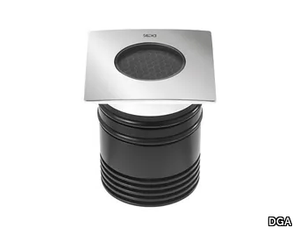
DGA > Functional light
Here’s the rephrased and expanded product description with a concise supplier overview and mention of the 3D file: **Product Description:** The **Tono Qd IP67** is a sleek and versatile outdoor steplight, part of the mini track projector series that includes *Tini* and *Tono*, renowned for their compact size and exceptional adjustability. Designed for track installation, these fixtures offer unmatched flexibility, making them ideal for retail, hospitality, and architectural lighting projects. Available in three elegant finishes, they seamlessly adapt to any design scheme. A downloadable 3D file of the product is available for precise planning and integration. For detailed specifications, refer to the manufacturer’s documentation on **TONO QD IP67 DGA**. **Supplier Overview:** DGA is a leading Italian interior design supplier known for its innovative, high-quality lighting and furnishings, catering to both residential and commercial projects. (Note: Kept the supplier description to one sentence as requested while retaining key details.)
NESIS H65 Am - Outdoor steplight _ DGA
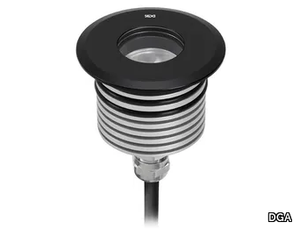
DGA > Functional light
Here’s the rephrased and expanded product description, including a concise supplier overview and mention of the 3D file availability: **"The Nesis H65 Am is a sleek outdoor steplight featuring an anti-glare honeycomb design, combining functionality with minimalist aesthetics for modern spaces. For detailed specifications, refer to the manufacturer's documentation under NESIS H65 Am DGA. A downloadable 3D file of the product is available for design integration. Supplied by DGA, a renowned Italian interior design brand known for its high-quality lighting and furniture solutions."** (Note: I condensed the supplier details to one impactful sentence while retaining key credibility markers like "Italian," "high-quality," and "lighting/furniture expertise." The 3D file mention is seamlessly integrated to support designers.)
NESIS H65 - Outdoor steplight _ DGA
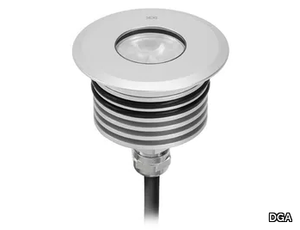
DGA > Functional light
Here’s the rephrased and expanded product description with a concise supplier overview and mention of the 3D file: *The Nesis H65 is a sleek and durable outdoor steplight, designed to combine functionality with modern aesthetics. For more detailed specifications, refer to the manufacturer's product page: NESIS H65 DGA. A 3D file of this product is also available for download, making it easier to visualize and integrate into your design plans. DGA, the supplier behind this product, is a renowned Italian interior design company known for its high-quality lighting, furniture, and accessories, catering to both residential and commercial projects.*
ARCO 60 i - Outdoor steplight _ DGA
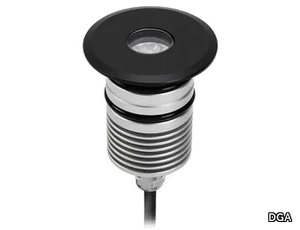
DGA > Functional light
Here’s the rephrased and expanded product description, along with a concise supplier overview and mention of the 3D file: **Product Description:** The *Arco 60 i* is a sleek outdoor steplight designed for minimal visual impact, blending seamlessly into modern architectural spaces. Available in an RGB version, it offers customizable lighting options to suit various ambiances. Multiple optics are available to tailor the light distribution to specific needs. For detailed specifications, refer to the manufacturer’s documentation under *ARCO 60 i DGA*. A downloadable 3D file of the product is also available for precise planning and integration into design projects. **Supplier Overview:** DGA is a renowned Italian interior design supplier known for its innovative, high-quality lighting and furnishings, catering to both residential and commercial projects. Explore their offerings at [www.dga.it](http://www.dga.it).
ODINO 6 i - Outdoor steplight _ DGA
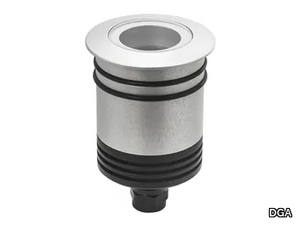
DGA > Functional light
Here’s the rephrased and expanded product description, along with a concise supplier overview and mention of the 3D file availability: --- **Driverless Technology & Seamless Design** The Odino 6 P and Odino 6 i LED fixtures feature innovative driverless technology, allowing direct connection to the main voltage (220-240V AC) for simplified installation and wiring. The Odino 6 P is a compact outdoor projector, while the Odino 6 i is a recessed, drive-over version, making the Odino range a versatile solution for architectural and landscape lighting. **Transparent Aesthetics & Versatility** Odino Solovetro combines driverless efficiency with a sleek, frameless glass cover, offering a minimalist yet elegant design. Its luminous yet discreet profile reflects cutting-edge technology tailored for professionals. Additional features include an asymmetrical optic (Odino ASY) and a trimless option for seamless integration. **3D File Available** For precise planning and integration, the 3D file of the product is available for download. **Supplier Overview** DGA is a renowned Italian design supplier known for its high-quality lighting and interior solutions, catering to both residential and commercial projects. For further details, visit the manufacturer’s website or contact their team. --- This version keeps the description engaging and professional while adding key details. Let me know if you'd like any refinements!
ARCO 60 IP67 M - Outdoor steplight _ DGA

DGA > Functional light
Here’s a refined and expanded product description, including a concise supplier overview and mention of the 3D file availability: **"The Arco 60 IP67 M is a sleek and durable outdoor steplight, designed to combine functionality with modern aesthetics, ideal for illuminating pathways, gardens, or architectural features while withstanding harsh weather conditions thanks to its IP67-rated waterproof construction. For detailed specifications, refer to the manufacturer’s product page: ARCO 60 IP67 M DGA. A downloadable 3D file of the product is also available for seamless integration into design projects. DGA, a renowned Italian interior design supplier, is celebrated for its high-quality lighting, furniture, and tailored solutions for residential and commercial spaces."** This version keeps the supplier description brief while highlighting key credibility points and adds the 3D file detail for designers' convenience.
GEMMA 20 IP67 - Outdoor steplight _ DGA
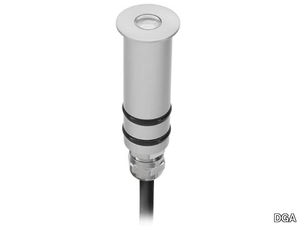
DGA > Functional light
Here’s a refined and expanded version of your product description, along with a concise supplier overview and a note about the 3D file: **Product Description:** The *Gemma 20 IP67* is a sleek and compact outdoor steplight designed for both functional and atmospheric lighting. This miniature yet robust fixture is built to withstand outdoor conditions with its IP67-rated durability, making it ideal for pathways, gardens, or architectural accents. It offers a wide selection of optics to customize light distribution, ensuring versatility for various design needs. For detailed specifications, refer to the manufacturer’s documentation on *GEMMA 20 IP67 DGA*. A downloadable 3D file of the product is also available for seamless integration into your design plans. **Supplier Overview:** DGA is a renowned Italian interior design supplier celebrated for its innovative, high-quality lighting, furniture, and accessories, catering to both residential and commercial projects. Let me know if you'd like any further adjustments!
ASTRO 80 - Outdoor steplight _ DGA
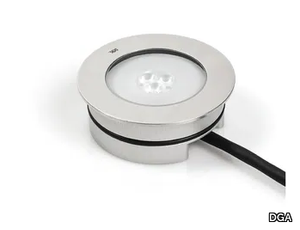
DGA > Functional light
Here’s the rephrased and expanded product description, including a concise supplier overview and mention of the 3D file: *"This recessed outdoor fixture features an ultra-slim design with a maximum thickness of just 30mm, making it ideal for installation in reinforced concrete slabs, pathways, and terraces. Available with 15°, 30°, or 60° optics, it also offers a decorative lighting option with a frosted diffuser in 1W or 2W versions. Rated IP67 for durability, it combines sleek aesthetics with robust performance. For detailed specifications, refer to the manufacturer’s ASTRO 80 DGA series. A 3D file of the product is available for download to assist with planning and integration. DGA, a renowned Italian design supplier (www.dga.it), is known for its innovative lighting solutions and high-quality craftsmanship."*
GEMMA 35 IP67 - Outdoor steplight _ DGA
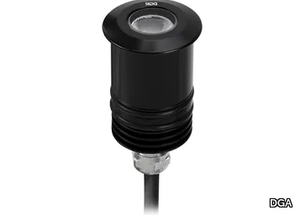
DGA > Functional light
Here’s a refined and expanded product description with a concise supplier overview and mention of the 3D file: **"The Gemma 35 IP67 is a sleek and durable outdoor steplight, designed to combine functionality with modern aesthetics, ideal for illuminating pathways, gardens, or architectural features while withstanding harsh weather conditions thanks to its IP67-rated waterproof construction. For detailed specifications, refer to the manufacturer's documentation on GEMMA 35 IP67 DGA. A downloadable 3D file of the product is available for precise planning and integration into your design projects. DGA, a renowned Italian interior design supplier, is known for its high-quality lighting, furniture, and tailored solutions for residential and commercial spaces."** This keeps the supplier description brief while highlighting key details about the product and its 3D file availability.
Recently Viewed Products
A wide range of product from furniture to finishes to meet the desire of all designers.
PROLIX DOUBLE - LED adjustable ceiling lamp _ LedsC4
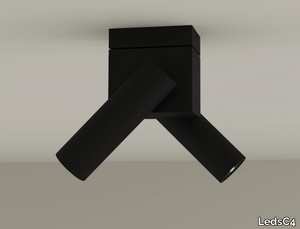
LedsC4 > Ceiling lamp
Here’s a refined and expanded product description, including a concise supplier overview and mention of the 3D file availability: **"The PROLIX DOUBLE is an elegantly adjustable, painted metal LED ceiling lamp from the PROLIX collection, designed by Nahtrang for LedsC4, combining contemporary style with precise light control. Featuring a faceted silhouette and an advanced lens system, this lamp allows you to customize the light angle for tailored illumination. With a warm 2700K color temperature, 90 CRI, and an output of 434 lumens (11.8–13.6W), it delivers both aesthetic appeal and functional brilliance. A 3D file of the product is available for download, enabling seamless integration into design plans. LedsC4, a renowned Spanish lighting specialist with over 40 years of expertise, offers innovative solutions for residential and commercial spaces worldwide."** This keeps the supplier description brief while highlighting key details about the product and its digital accessibility.
TUBE 80 P - LED metal pendant lamp _ ONOK Lighting
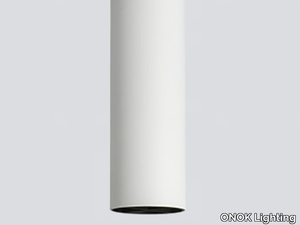
ONOK Lighting > Ceiling lamp
Here’s the rephrased and expanded product description, along with a concise supplier overview and mention of the 3D file: *"This versatile tubular aluminum extrusion lighting range is designed in three dimensions, offering varying power levels and beam angles to suit diverse lighting needs. Customizable with interchangeable mouths, it allows precise light focus and adaptation for different applications. A downloadable 3D file of the product is available for detailed preview and planning. For further specifications, refer to the TUBE 80 P model from ONOK Lighting—a renowned Spanish lighting innovator since 1993, known for blending high-quality materials with cutting-edge design."*
LYSABEL S VERTICAL - LED powder coated aluminium pendant lamp _ Intra lighting

Intra lighting > Ceiling lamp
**Lysabel** is an elegant suspension lamp that adds a touch of sophistication to any space, whether hung vertically, horizontally, or at an angle, and works beautifully both as a standalone piece or grouped in creative compositions. Its slender, homogeneously lit tube provides shadow-free illumination, featuring a clean, minimalist design with meticulously crafted details. Though it appears delicate, it is surprisingly durable, offering both striking visual appeal and powerful lighting performance. The lamp is equipped with a high-flux LED strip (CRI>90, MacAdam≤2) and a satin opal polycarbonate diffuser, housed in a sleek aluminum body with powder or PVD coating. Customizable options include different color temperatures (927K–940K), finishes, and control systems (Casambi, DACI, FO). A 3D file of the product is available for download, allowing for seamless integration into design plans. **Supplier Description:** Intra Lighting, a leading architectural lighting manufacturer since 1989, combines innovative design with premium craftsmanship, offering high-end lighting solutions for residential and commercial spaces. *Technical Specifications:* - **Light Source:** High-flux LED strip (50,000h L90 B10 at 35°C) - **Luminous Flux:** 565–2565 lm (1850 lm/m) - **Optic:** Satin opal polycarbonate (SOP) - **Body:** Aluminum, powder or PVD coated - **Control Gear:** 24V DC constant voltage driver (sold separately) - **Ceiling Cup:** Optional with/without driver - **Color Finishes:** A, C, H, F, YS - **Suspension:** Vertical or horizontal For more details, visit [Intra Lighting's website](https://www.intra-lighting.com/).
TONO B 220V - Track-Light _ DGA
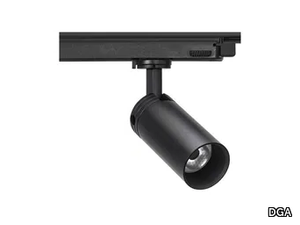
DGA > Ceiling lamp
Here’s the rephrased and expanded product description, along with a concise supplier overview and mention of the 3D file availability: **Product Description:** The **Tono B 220V** mini projector redefines lighting with a fresh perspective, now available in a track-mounted version for enhanced flexibility. Part of the **Tono and Tini** series, these compact fixtures boast exceptional adjustability and sleek dimensions, making them ideal for retail and hospitality environments. The track installation expands their versatility, while three stylish finishes ensure seamless integration into any design scheme. A downloadable 3D file of the product is available for precise planning and visualization. For more details, refer to the manufacturer’s specifications on **TONO B 220V DGA**. **Supplier Overview:** DGA is a renowned Italian interior design supplier celebrated for its innovative, high-quality lighting and furnishings. Let me know if you'd like any further refinements!
Products From the Same Collection
A wide range of product from furniture to finishes to meet the desire of all designers.
TONO I IP67 - Outdoor steplight _ DGA

DGA > Functional light
Here’s a refined and expanded product description, including a concise supplier overview and mention of the 3D file availability: **Product Description:** The *Tono i IP67* is a high-performance outdoor steplight featuring backward optics and a precise 3° lens, delivering focused illumination for architectural and landscape applications. Part of the *Tini* and *Tono* mini track projector series, it combines exceptional orientability with compact dimensions, making it ideal for retail, hospitality, and outdoor projects. The track installation ensures versatility, while three finish options allow seamless integration into any design. A downloadable 3D file is available for detailed planning. For technical specifications, refer to the manufacturer’s documentation on *TONO I IP67 DGA*. **Supplier Overview:** DGA is a renowned Italian design supplier celebrated for its innovative lighting, furniture, and interior solutions, catering to both residential and commercial markets. (Note: Kept the supplier description to one sentence as requested, focusing on core strengths.)
TONO IR IP67 - Outdoor steplight _ DGA

DGA > Functional light
Here’s the rephrased and expanded product description, including a concise supplier overview and mention of the 3D file availability: **Product Description:** The *Tono iR IP67* is a sleek and versatile outdoor steplight designed for both functionality and aesthetics. Its compact, minimalistic design, paired with a robust outer casing, ensures superior IP67 protection against harsh weather conditions. Featuring a rearward optic, it delivers effective anti-glare illumination while maintaining a discreet profile. For tailored lighting solutions, it offers four optic options and two power levels, providing flexibility for diverse applications. The integrated ball joint allows omnidirectional adjustment, making it easy to orient for optimal light distribution. Ideal for pathways, gardens, or architectural accents, this downlight is also available in a fixed version. Part of the *Tini* and *Tono* mini track projector series, it combines maximum orientability with a compact form, making it perfect for retail, hospitality, or outdoor settings. Available in three finishes, it seamlessly adapts to any project style. A downloadable 3D file is available for precise planning and integration. For further details, refer to the manufacturer’s specifications on *TONO IR IP67 DGA*. **Supplier Overview:** DGA is a renowned Italian interior design supplier known for its innovative, high-quality lighting and furniture solutions. (Note: Kept the supplier description to one sentence as requested, focusing on key strengths.)
TONO QD IP67 - Outdoor steplight _ DGA

DGA > Functional light
Here’s the rephrased and expanded product description with a concise supplier overview and mention of the 3D file: **Product Description:** The **Tono Qd IP67** is a sleek and versatile outdoor steplight, part of the mini track projector series that includes *Tini* and *Tono*, renowned for their compact size and exceptional adjustability. Designed for track installation, these fixtures offer unmatched flexibility, making them ideal for retail, hospitality, and architectural lighting projects. Available in three elegant finishes, they seamlessly adapt to any design scheme. A downloadable 3D file of the product is available for precise planning and integration. For detailed specifications, refer to the manufacturer’s documentation on **TONO QD IP67 DGA**. **Supplier Overview:** DGA is a leading Italian interior design supplier known for its innovative, high-quality lighting and furnishings, catering to both residential and commercial projects. (Note: Kept the supplier description to one sentence as requested while retaining key details.)
TONO mR - Recessed round spotlight _ DGA
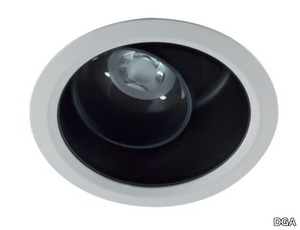
DGA > Ceiling lamp
Here’s the refined product description with an expanded yet concise supplier detail and mention of the 3D file availability: **Tono mR** is a sleek, recessed spotlight designed for precision and elegance, featuring hidden adjustability, compact dimensions, and a super narrow beam—ideal for expositions, retail spaces, and hospitality projects. With four optic options, it delivers exceptional lighting comfort while maintaining a minimalist profile. Part of the mini track projector series (including *Tini* and *Tono*), it offers maximum orientability and flexibility for track installations, available in three versatile finishes to suit any design aesthetic. A downloadable 3D file of the product is available for detailed planning. **Supplier**: DGA, a renowned Italian interior design leader, combines innovative craftsmanship with a global presence, offering high-quality lighting and design solutions. Explore their portfolio at [www.dga.it](http://www.dga.it).
TONO B 220V - Track-Light _ DGA

DGA > Ceiling lamp
Here’s the rephrased and expanded product description, along with a concise supplier overview and mention of the 3D file availability: **Product Description:** The **Tono B 220V** mini projector redefines lighting with a fresh perspective, now available in a track-mounted version for enhanced flexibility. Part of the **Tono and Tini** series, these compact fixtures boast exceptional adjustability and sleek dimensions, making them ideal for retail and hospitality environments. The track installation expands their versatility, while three stylish finishes ensure seamless integration into any design scheme. A downloadable 3D file of the product is available for precise planning and visualization. For more details, refer to the manufacturer’s specifications on **TONO B 220V DGA**. **Supplier Overview:** DGA is a renowned Italian interior design supplier celebrated for its innovative, high-quality lighting and furnishings. Let me know if you'd like any further refinements!
TONO B 24V - Track-Light _ DGA
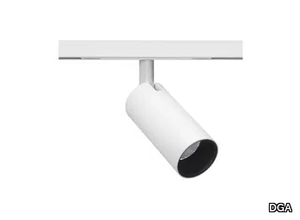
DGA > Ceiling lamp
**Tono B 24V – Illumination Redefined with Versatility** Discover the **Tono B 24V**, a sleek and highly adjustable mini projector now available in a **track-mounted version**, offering even greater flexibility for retail and hospitality spaces. Alongside its counterpart, the **Tini B**, these compact fixtures combine **maximum adjustability** with minimalist design, making them ideal for dynamic lighting solutions. Available in **three elegant finishes**, they seamlessly adapt to any project aesthetic. For added convenience, a **3D file of the product is available for download**, enabling seamless integration into your design plans. **Supplier Overview:** DGA is a leading interior design supplier renowned for its innovative, high-quality lighting and furniture solutions. Explore their offerings at [www.dga.it](http://www.dga.it). For detailed specifications, visit the manufacturer’s page on **TONO B 24V DGA**.
TONO P - Adjustable round spotlight _ DGA

DGA > Ceiling lamp
Here’s a refined and expanded product description, including a concise supplier overview and mention of the 3D file availability: **"The adjustable round spotlight TONO P DGA (IP40) combines sleek design with exceptional flexibility, featuring the compact and highly orientable mini track projectors Tini and Tono. Ideal for retail and hospitality spaces, their track installation ensures effortless adaptability, while three finish options guarantee seamless integration into any project. A downloadable 3D file is available for precise planning. Manufactured by DGA, a renowned Italian interior design supplier known for innovative lighting solutions, this spotlight reflects their commitment to quality and versatility."** (Note: I condensed the supplier details to one impactful sentence while retaining key credibility points—industry reputation, specialization, and origin.)
TONO - Adjustable round spotlight _ DGA
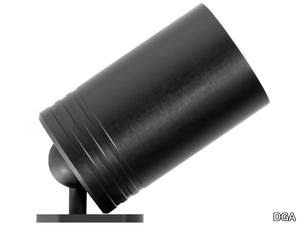
DGA > Ceiling lamp
**Product Description:** Discover the mini track projectors **Tono** and **Tini**, now available in a sleek track version, offering enhanced adjustability and compact design for maximum versatility. Ideal for retail and hospitality settings, these fixtures combine high flexibility with minimalist aesthetics, ensuring seamless integration into any space. The **TONO B** and **TINI B** models are also offered in three elegant finishes, providing the perfect solution for diverse design projects. For added convenience, the 3D file of the product is available for download, enabling easy visualization and planning. **Supplier Description:** DGA is a leading interior design supplier renowned for its innovative, high-quality solutions, catering to both residential and commercial projects.
TONO SUPER AF - Recessed round spotlight _ DGA
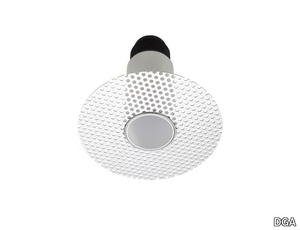
DGA > Ceiling lamp
Here’s a refined and expanded product description, including a concise supplier overview and mention of the 3D file availability: **Product Description:** The *Tono Super AF* is a sleek, recessed round spotlight designed to deliver precise, glare-free illumination. Its deeply recessed light source remains nearly invisible, minimizing glare and light dispersion while ensuring focused, controlled lighting—ideal for residential and hospitality settings where discretion and ambiance are key. Available with multiple optics and installation options, the *Tono Super AF* adapts effortlessly to diverse environments. Featuring a compact 70mm low-glare optic, it pairs seamlessly with the *Tini* and *Tono* mini track projectors, renowned for their exceptional adjustability and minimalist profile. Perfect for retail or hospitality spaces, these track-mounted fixtures come in three finishes to complement any design scheme. A downloadable 3D file of the product is available for detailed planning. For further specifications, refer to the manufacturer’s details on *TONO SUPER AF DGA*. **Supplier Overview:** DGA, a leading Italian interior design supplier, combines innovative craftsmanship with a global reputation for high-quality lighting, furniture, and textiles. Explore their portfolio at [www.dga.it](http://www.dga.it).
TONO AF - Recessed round spotlight _ DGA
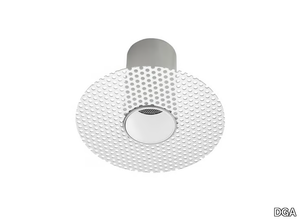
DGA > Ceiling lamp
Here’s the rephrased and expanded product description, along with a concise supplier overview and mention of the 3D file: **Product Description:** The Tono AF is a sleek, recessed round spotlight designed to deliver precise, glare-free illumination with its deeply recessed light source, ensuring minimal visibility and optimal light control. Its compact size makes it perfect for residential and hospitality settings where discreet, high-performance lighting is essential. Available with multiple optics and installation options, the Tono series (including Tono Am, Tono Super Am, Tono AF, and Tono Super AF) adapts seamlessly to diverse environments. Featuring a 30mm low-glare optic, it combines functionality with subtle elegance. Part of the mini-track projector family alongside Tini, the Tono series boasts exceptional adjustability and a minimalist profile, ideal for retail and hospitality applications. Offered in three finishes, it blends effortlessly into any design scheme. A downloadable 3D file is available for detailed project planning. For additional specifications, refer to the manufacturer’s details on **TONO AF DGA**. **Supplier Overview:** DGA is a renowned Italian interior design supplier celebrated for its innovative, high-quality lighting, furniture, and accessories, catering to both residential and commercial projects. Explore their portfolio at [www.dga.it](http://www.dga.it).
TONO SUPER AM - Recessed round spotlight _ DGA
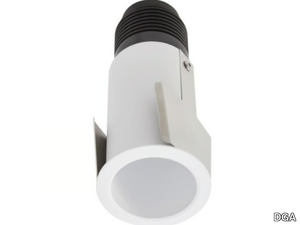
DGA > Ceiling lamp
**Product Description:** Compact yet powerful, the Tono Super Am, Tono AF, and Tono Super AF recessed lights feature a deep-set light source that minimizes glare and light dispersion, ensuring precise illumination. Their discreet size makes them perfect for residential and hospitality settings where subtle, controlled lighting is essential. With multiple optics and installation options, these fixtures adapt effortlessly to any space. Designed for high visual comfort, they boast an ultra-slim profile, three optic choices, and an IP40 rating. Part of the Tini and Tono mini track projector series, these lights offer exceptional adjustability and flexibility, ideal for retail and hospitality environments. Available in three elegant finishes, they seamlessly blend into any design scheme. A downloadable 3D file of the product is available for further customization and planning. **Supplier Description:** DGA is a renowned Italian interior design supplier known for its innovative, high-quality lighting, furniture, and accessories, catering to both residential and commercial projects. For more details, visit [www.dga.it](http://www.dga.it).
TONO AM - Recessed round spotlight _ DGA
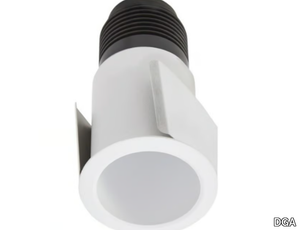
DGA > Ceiling lamp
Here’s a refined and expanded product description, along with a concise supplier overview: **Product Description:** The *Tono Am* is a compact and comfortable recessed fixture with a sleek, low-profile design featuring recessed optics for optimal visual comfort. Its minimal dimensions and versatile aesthetics make it ideal for residential and hospitality projects, blending seamlessly into any space. The fixture is available in a range of stylish finishes—including grey, black, white, gold, gothic cement, corten, and oyster white—enhancing its decorative appeal. For added flexibility, an IP55-rated version is available for more demanding environments. Additionally, the *Tono Am* and its mini-track counterparts, *Tini* and *Tono*, excel in orientability and adaptability, making them perfect for retail and hospitality settings. A downloadable 3D file of the product is available for precise project planning. **Supplier Overview:** DGA is a renowned Italian interior design supplier celebrated for its high-quality, innovative lighting and furnishings, serving both residential and commercial markets. Let me know if you'd like any further adjustments!
TONO N IP40/IP55 - Ceiling Outdoor spotlight _ DGA
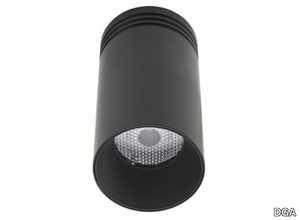
DGA > Functional light
Here’s a refined and expanded product description, including a concise supplier overview and mention of the 3D file availability: **"The Tini and Tono mini track projectors are compact, highly adjustable ceiling or outdoor spotlights (IP40) designed for versatile lighting solutions. Ideal for retail and hospitality spaces, their track installation ensures flexibility, while three finish options allow seamless integration into any project. A 3D file of the product is available for download to assist with planning. Manufactured by DGA, a renowned Italian design leader known for innovative lighting and interior solutions, the Tono N IP40/IP55 model offers both style and functionality."** (Note: I condensed the supplier details to one impactful sentence while retaining key credibility points—nationality, expertise, and reputation.)
TONO RF - Recessed adjustable spotlight _ DGA
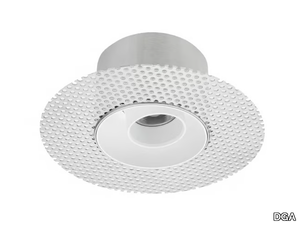
DGA > Ceiling lamp
**Tono RF** is a sleek, trimless recessed spotlight designed for precision and elegance, featuring hidden adjustability and compact dimensions. Its super narrow 3° beam and 360° rotation allow for pinpoint lighting control, making it ideal for retail, exhibition spaces, and hospitality projects. The fixture integrates seamlessly into architecture, offering a minimalist yet highly functional solution. Part of the mini track projector series alongside *Tini*, Tono RF combines maximum orientability with a discreet profile, ensuring flexibility in track installations. Available in three finishes, it adapts effortlessly to any design scheme. A downloadable 3D file of the product is available for detailed planning. For specifications, refer to **TONO RF DGA**. **Supplier Description:** DGA is a leading Italian interior design supplier renowned for innovative, high-quality lighting and furnishings, serving both residential and commercial markets. Explore their offerings at [www.dga.it](http://www.dga.it).
TONO i IP67 GS - LED walkover light metal steplight _ DGA
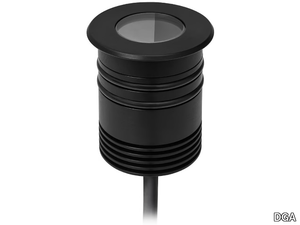
DGA > Functional light
Here’s your rephrased and expanded product description, including a concise supplier overview and mention of the 3D file availability: **Product Description:** The *Tono i IP67 GS* is a sleek, recessed LED walkover light or step light, crafted from metal and designed for both functionality and aesthetic appeal. Featuring asymmetric optics and a thin flange with an eyelid, it ensures precise light control and exceptional visual comfort, making it ideal for residential and hospitality settings. Its clean, uniform beam and compact dimensions enhance versatility, while the mini track installation offers maximum adjustability—perfect for retail or hospitality projects. Available in three finishes, it seamlessly adapts to any design scheme. A downloadable 3D file of the product is available for detailed planning. For technical specifications, refer to the manufacturer’s details on *TONO i IP67 GS DGA*. **Supplier Overview:** DGA is a renowned Italian interior design supplier celebrated for its innovative, high-quality lighting and furnishings, catering to both residential and commercial projects. Let me know if you'd like any further refinements!
TONO im IP67 - Recessed LED round metal spotlight _ DGA
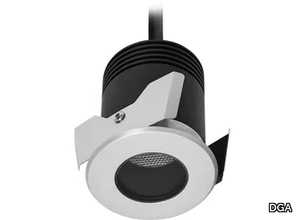
DGA > Ceiling lamp
Here’s a refined and expanded product description, including a concise supplier overview and mention of the 3D file availability: **Product Description:** The *Tono im IP67* is a sleek, high-performance LED metal spotlight designed for precision lighting, delivering concentrated luminous flux with maximum efficiency. Its compact and highly adjustable design, part of the *Tini* and *Tono* mini track projector series, ensures exceptional flexibility—ideal for retail, hospitality, and architectural applications. Available with multiple optic options and in three elegant finishes, it seamlessly adapts to any project aesthetic. For detailed specifications, refer to the manufacturer’s documentation, and explore the downloadable 3D file for seamless integration into your design plans. **Supplier Overview:** DGA is a renowned Italian interior design supplier celebrated for its innovative, high-quality lighting, furniture, and accessories, catering to both residential and commercial projects. Let me know if you'd like any further adjustments!
TONO i IP67 SOLOVETRO - LED walkover light metal steplight _ DGA
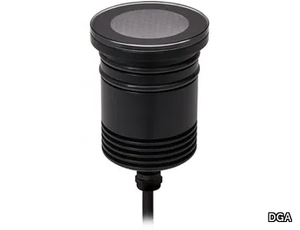
DGA > Functional light
Here’s your rephrased and expanded product description, including a concise supplier overview and mention of the 3D file availability: **TONO i IP67 SOLOVETRO** is a sleek, weather-resistant LED walkover light and metal steplight, where the glass takes center stage, adding a refined touch to its durable, all-weather design. The signature honeycomb louver not only enhances its aesthetic appeal but also ensures exceptional glare control. Available with four optic options, this compact yet sophisticated fixture combines elegance with functionality. Part of the **Tini and Tono** mini track projector series, it offers maximum adjustability and a discreet profile, making it ideal for retail and hospitality spaces. Choose from three versatile finishes to match any project style. A downloadable 3D file is available for precise planning. For more details, visit the manufacturer’s page on **TONO i IP67 SOLOVETRO DGA**. **Supplier Overview:** DGA is a leading Italian interior design supplier renowned for its high-quality, innovative lighting and furniture solutions. Let me know if you'd like any further refinements!
TONO B 48V DOUBLE - LED metal track-Light _ DGA
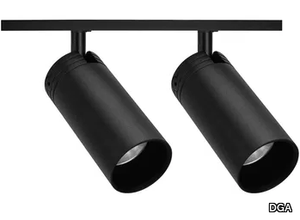
DGA > Ceiling lamp
Here’s your refined product description with an expanded yet concise supplier overview and a mention of the 3D file availability: **Product Description:** The *Tono B 48V Double* is a sleek, high-performance LED metal track-light designed for precision and adaptability. Part of the *Tini* and *Tono* mini-track projector series, it combines maximum orientability with compact dimensions, making it ideal for dynamic lighting solutions in retail, hospitality, and commercial spaces. The track-installed design ensures flexibility, while three finish options allow seamless integration into any project. A downloadable 3D file of the product is available for detailed planning. For technical specifications, refer to the manufacturer’s details on *TONO B 48V DOUBLE DGA*. **Supplier Overview:** DGA is a renowned Italian interior design supplier celebrated for its innovative, high-quality lighting, furniture, and accessories, catering to both residential and commercial projects. Explore their portfolio at [www.dga.it](http://www.dga.it). Let me know if you'd like any further refinements!
TONO P90 - LED wall-mounted adjustable metal spotlight _ DGA
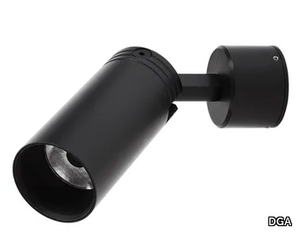
DGA > Ceiling lamp
Here’s a refined and expanded product description, including a concise supplier overview and mention of the 3D file availability: **Product Description:** The *Tono P90* is a sleek, wall-mounted LED spotlight with adjustable metal construction, offering maximum orientability and an anti-glare system for optimal lighting control. Designed for versatility, it comes with four optic options to suit different lighting needs. Part of the *Tini* and *Tono* mini-track projector series, these fixtures combine compact dimensions with exceptional flexibility, making them ideal for retail, hospitality, and architectural applications. Available in three finishes, they seamlessly adapt to any project style. A downloadable 3D file of the product is available for precise planning and integration. For detailed specifications, refer to the manufacturer’s documentation on *TONO P90 DGA*. **Supplier Overview:** DGA is a renowned Italian interior design supplier celebrated for its innovative, high-quality lighting and furnishings, serving both residential and commercial markets. Let me know if you'd like any further adjustments!
TONO B 48V - LED metal track-Light _ DGA
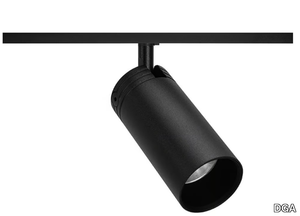
DGA > Ceiling lamp
**Product Description:** The Tono B 48V is a sleek and versatile LED metal track-light, part of the compact Tini and Tono series, renowned for their exceptional adjustability and minimalistic design. Ideal for retail and hospitality settings, these mini track projectors offer seamless track installation for maximum flexibility. Available in three elegant finishes, they effortlessly adapt to any project aesthetic. A downloadable 3D file of the product is available for detailed planning and integration. For additional specifications, refer to the manufacturer’s details on **TONO B 48V DGA**. **Supplier Description:** DGA is a leading Italian interior design supplier known for its high-quality, innovative lighting and furniture solutions, catering to both residential and commercial projects. Explore their offerings at [www.dga.it](http://www.dga.it).
Recommended Products
A wide range of product from furniture to finishes to meet the desire of all designers.
Top Pendant Lamp
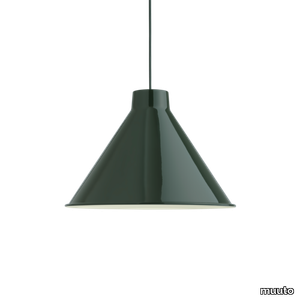
muuto > Ceiling lamp
With its universal and simple design, Top Pendant is a contemporary reinterpretation of the archetypical cone-shaped pendant. Its top is a striking feature designed to neatly fit its compact LED light source. Manufactured in spun steel with a graphic rolled hem, it is a versatile lighting family that offers an array of opportunities in color, size and function.
Ambit Rail Lamp
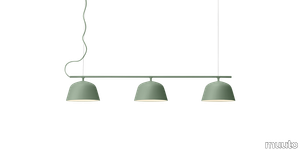
muuto > Ceiling lamp
The Ambit Rail Lamp is characterized by its simple lines and elegant shapes, bringing a refined light to any space. With its shades being made of handspun aluminum, the Ambit Rail Lamp features white interiors that provide a contrast to its outside shade while enhancing the light emitted into the room of any home, office or hospitality space.
Ambit Pendant Lamp
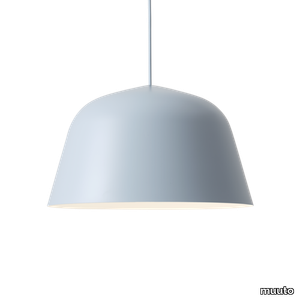
muuto > Ceiling lamp
Embodying the values of Scandinavian design, the Ambit Pendant Lamp is as timeless as it is contemporary. Made of hand-spun aluminum that has been hand-painted, the Ambit Pendant Lamp features clean lines and a white interior that heighten contrasts of its outside shade while enhancing the light emitted in any room of a home, office or commercial space. Use the design on its own or symmetric formations and vibrant clusters.
Fluid Pendant Lamp

muuto > Ceiling lamp
Inspired by a resting drop of water, the Fluid Pendant Lamp shows how soft light can diffuse across a space for a cosy atmosphere. The frosted matte surface creates a glowing ambience that fits into any home or casual business setting. Present the design individually or in a group for an intimate atmosphere.
Khan metal
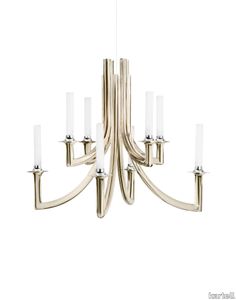
kartell > Ceiling lamp
Many different styles, from 18th century eclecticism to contemporary minimalism, come together in Philippe Starck’s KHAN chandelier to create a new icon of elegance and modernity. The symbolism of the design is complemented by the technological innovation of Kartell’s new polycarbonate 2.0 in the colours black, champagne and clear.
Small fl/y transparent
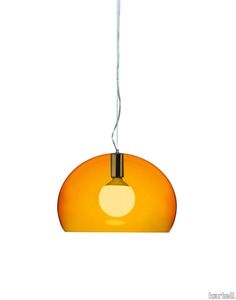
kartell > Ceiling lamp
FL/Y is an essentially-styled suspension lamp. The particular transparency of the material and the sheen of the colours recreate the idea of a soap bubble, shimmering iridiscently in the light. The shade is not perfectly hemispherical, with the cut-off falling just below the level of the diameter, offering greater concentration of the light. The lamp is available in three different sizes: Fl/Y (diameter 52cm, shade depth 33cm), Small Fl/Y (diameter 38cm, shade depth 28cm) and Big Fl/Y (diameter 83cm, shade depth 55cm).
Ge' metal
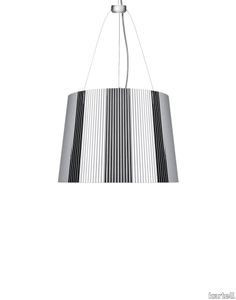
kartell > Ceiling lamp
Gè is a suspension lamp attached to the ceiling with a decorated rosette suggestive of antique Venetian chandeliers. It comes with a 37 cm diameter pleated lampshade. The cable can be adjusted in height from 45 to 230 cm.
Bloom hanging medium metal
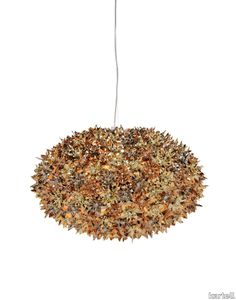
kartell > Ceiling lamp
Bloom is a tubular polycarbonate framework entirely covered by a structure of tiny transparent polycarbonate double corolla flowers. The result is an industrially produced lamp but with all the forms and stylistic complexity of a unique handcrafted piece.
Bloom hanging big
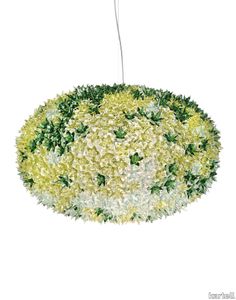
kartell > Ceiling lamp
Bloom is a tubular polycarbonate framework entirely covered by a structure of tiny transparent polycarbonate double corolla flowers. The result is an industrially produced lamp but with all the forms and stylistic complexity of a unique handcrafted piece.
Mist AP16
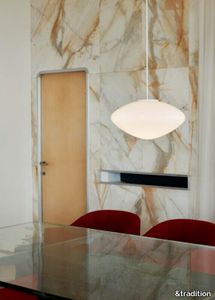
&tradition > Ceiling lamp
Mist is inspired by the warm, diffused light of morning rays shining through the haze, offering a modern take on the classic globe light silhouette. Crafted from mouth-blown opal glass with white coated aluminium details and a textile cord, the Mist pendant lamp is available in two sizes.
Taraxacum 88 Suspension 1
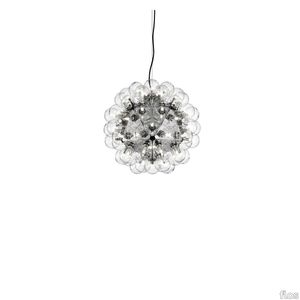
flos > Ceiling lamp
Suspension lamp providing direct and reflected lighting. Structure formed by 20 pressed, polished aluminum triangles. 60 clear Globolux lamps housed around the structure. Steel ceiling fitting and rose.
UPHOLSTERY
A wide range of Upholstery and materials provided by our suppliers to satisfy your needs.
AI services
Fringe Chatbot | Image Finder | Fringe Dall-e | Area Analyzer


